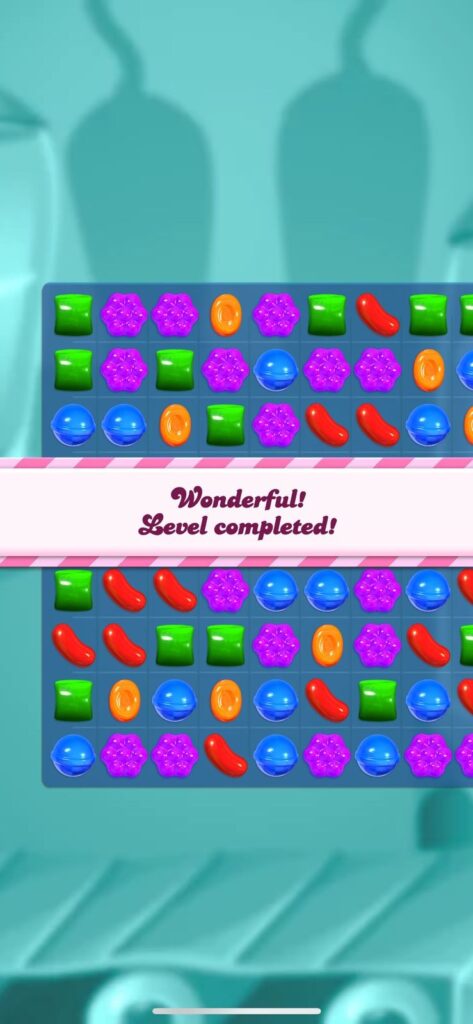Here’s the story for folks who’ve never travelled in Mumbai’s local trains – the train is more than a transport system. It’s the most robust connection for 7 million folks who rely on these trains to face the daily grind. It’s crowded, noisy, and sweaty, but it’s also a place where class and hierarchy don’t exist. Some women chop vegetables; teachers use the commute time to correct answer papers; people watch shows on their phones, talk to strangers, and some prefer to sleep or stare out the window.
However, a new obsession has sprung up in recent years – Candy Crush. What initially came off as a fad turned out to be a new travelling ritual, surprisingly, the dominating one. Unlike the other games such as PUBG and Free Fire, which cater to a specific gender and age, people of all age groups- children, adults, and even grandparents play Candy Crush. Even on hour-long journeys, you will find people glued to their phones, swiping away candies and repeating the same task with increasing levels. Strangely, something is calming about even observing the game. I downloaded the game out of curiosity to understand the underlying behavioural science that motivates people to tap their fingers mindlessly on the screen. For starters, I admit that it is addicting. But, there is no doubt that mind loads of psychology and behavioural science engineer this addiction.
A walk through childhood fantasies
The entire interface of the Candy Crush Saga world evokes a sense of nostalgia. It is inviting because it’s so happy. It reminds you of a fantasy dreamland that you’ve imagined as a child, with clouds made of cotton candy and colourful pops of candy sticks floating across the sky. On the outside, it seems like that game is designed for adults, but soon enough, you realise that it is intended for the inner child in adults.
The game rules are simple; a no brainer really – swipe matching coloured candies and watch them disappear. To an outsider, it deems ridiculous that a game with almost no rules or brain power has grossed one the highest revenues globally. Yet, what might sounds so straightforward is actually based on some of the fundamental ways that humans understand and experience the world.
A child’s play
We all have played Candy Crush at many points in our lives- directly or indirectly. Let me explain.
As a child, whenever I went to the doctor’s clinic, there was a bead toy maze placed in the waiting room. I would spend plenty of minutes arranging and rearranging those beads, again and again, to mix and match those colours. I found sheer joy in that activity, without understanding why.
Other than that, I loved eating the chocolate Gems (M&Ms) for reasons beyond its taste. I would remove all the candies from the packet, organise them into matching colours, and then devour them one after another. Similarly, when I bought a pack of 52 shades of crayons, I would ensure that I placed each crayon back into its original place to match the shade with its neighbour.
I shared these two examples to highlight that sorting by colour is an innate characteristic of human beings, a practice we have been following naturally. That is how we learn to process and organise information around us, even as toddlers. Creating distinctions while understanding patterns helps us view the entire picture as a whole and make sense of the information presented to us.
Candy Crush understands this inherent trait and has constructed rules around it to create exact colour matches. In summary, the task you have to do as a player is something that you have been doing automatically since you were a child. It forms the crux of the game and it doesn’t have to be taught, making it universally accessible to all.
Here’s an interesting fact: Children view brighter colours better at an earlier age because their eyes are developing. It’s no surprise that all the candies in the game follow the brilliant colour code.
Sorting and the sense of control
“Fundamentally, categorization reduces mental effort and streamlines the flow of information.”
Dr Daniel Levitin. The Organized Mind
You start making many micro-decisions as you match colours in a few minutes. These micro-decisions, in turn, increase your confidence as your ability to make decisions increases. Eventually, it helps the player feel like they are in control of their actions, and these actions are leading to significant changes.
And this helps in relieving stress.
The game’s motto is “Chill and unwind” and “Swipe your stress away.” Stress arises due to uncertainty and a lack of control of the stimulus and instances around you. When you enter the planet of Candy Crush, it gives you a chance to forget all worries and take charge of your progress.
For example, when you match a colour bomb to another ordinary candy, the entire screen explodes. To add to the multisensory experience, the device you are playing on vibrates in your palms. The game explicitly sends messages such as ‘divine’ and ‘excellent,’ placing you on a pedestal.


Overall, the implicit message that is reinforced while playing the game is that you are a good decision-maker who controls decisions.
A great deal of Behavioural Science and Gamification Principles
Octalysis, the framework developed by Yu-Kai Chou, the master of gamification, highlights the core drivers of motivation. According to Chou, for any behaviour to exist, it must tap into at least one core area of motivation.
Candy Crush taps mainly into three areas – Accomplishment, Empowerment and Social Influence.
Accomplishment: At the end of every level, you get stars, and a performance indicator tells you how you performed – level failed, or level completed. A progress bar also shows how far you have come, also known as the goal-gradient effect. After every stage, it oozes out positive gratification, increasing morale.
Empowerment: If you complete levels and quests quickly, you get specific boosters that can easily help you win the next level. You can also exchange your points to buy more boosters.
A clever tactic used by Candy Crush is that they offer specific boosters to you for a fixed period for unlimited use. It nudges users to spend more than the intended time on the app. It works on the principle of the endowment effect, where the player now feels like they own the booster. If they don’t use it within the timeframe, they will lose out on opportunities.
The game also has a limit of providing only five lives at one time. If you run out of them, you either have to purchase more lives and wait for 15 minutes till you next the life. There’s an artificial shortage, which leaves you craving for more when you lose out.
Social Influence: At any given point, the game auto-enrols you into various mini contexts with a group of people across the globe who are at a similar level. The winner is awarded generously. Simultaneously, it also enrols your quests, where everyone’s accumulated points, determine the prize. It motivates you to continue playing the game to meet group expectations beyond your own needs.
Candy Crush- Swiping away from reality
It’s no surprise that commuters engage so much of their time in playing Candy Crush. It’s easy, positively reinforcing, and allows you to enter a world without uncertainty. It enables you to break away from the monotony and stressed life and enter a colourful world filled with joy through simple strokes of only one finger.
The game is a win from a Behavioural Science lens when it comes to engaging users – no doubt about it.
But how healthy is it for the brain?
That’s a question I would like to explore next.


